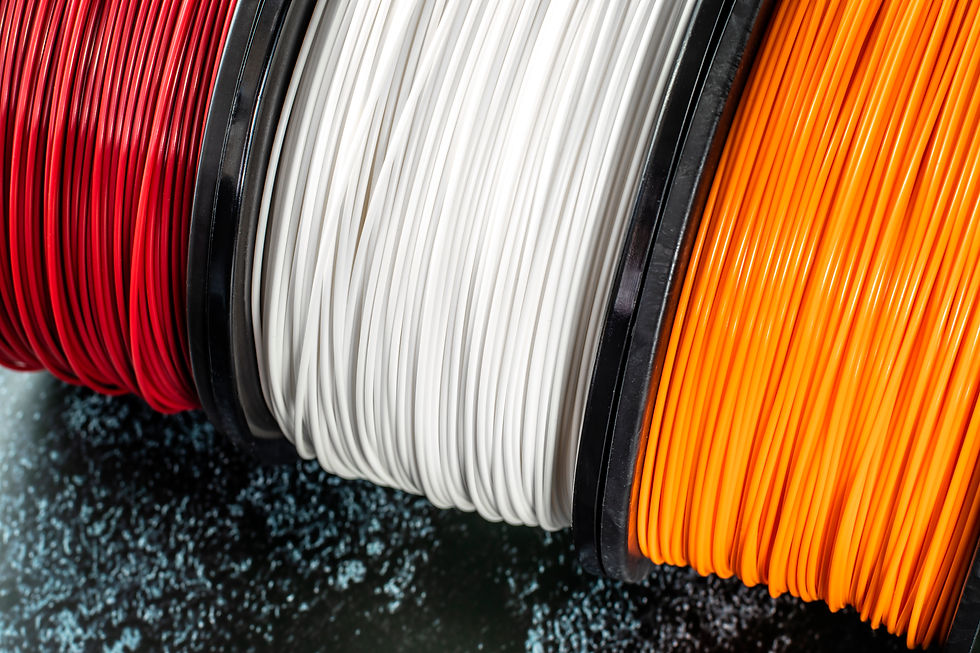Type of bed plate for FDM 3d Printer
- Nikunj Gohil
- Mar 8, 2023
- 3 min read
Fused Deposition Modeling (FDM) 3D printers, the build platform, often referred to as the "bed," is an essential component. The bed provides the surface on which the 3D printed object is built layer by layer. Different types of bed surfaces and materials can impact the adhesion of the printed object to the bed and influence the overall print quality. Here are some common types of bed surfaces used in FDM 3D printers:
Heated Build Plate: Many FDM 3D printers come equipped with a heated build plate. Heating the build plate helps prevent warping and enhances the adhesion of the first few layers of the print. It's especially useful when printing with materials like ABS that tend to warp as they cool down.
Glass Build Plate: Glass build plates are a popular choice due to their smooth and flat surface. They offer good adhesion and are easy to clean. However, they might require additional adhesion aids like tape or glue for some materials.
PEI (Polyetherimide) Sheet: PEI sheets provide excellent adhesion for a wide range of materials, and prints tend to stick well to them without the need for additional adhesion aids. They are durable and can be used with or without a heated build plate.
BuildTak or Similar Surfaces: BuildTak is a proprietary material designed to enhance adhesion for 3D prints. Similar products include FlexPlate systems, which combine a flexible build surface with magnets for easier print removal.
Magnetic or Removable Build Surfaces: Some printers use magnetic build surfaces that allow for easy removal of the printed object. These surfaces can often be flexed to pop the print off the bed once it's finished.
Blue Painter's Tape: Blue painter's tape is a low-cost option that can help with adhesion for certain materials. It provides a textured surface that helps prints stick.
Kapton Tape: Kapton tape is a heat-resistant tape often used on heated build plates. It can work well for specific materials but may require some experimentation to achieve optimal adhesion.
PEI Powder-Coated Surfaces: Some printers come with build plates that have a PEI powder-coated surface. These surfaces offer good adhesion for a range of materials.
Perforated Build Plate: A build plate with small perforations or holes can help with adhesion by allowing the filament to seep through and form a mechanical bond. It's commonly used with materials like PLA.
Textured Powder-Coated Surfaces: Some printers have build plates coated with a textured powder material that enhances adhesion and allows for easy print removal once the plate cools down.
Ultrabase or Ultrabuild Surfaces: These are textured glass build plates with a special coating that improves adhesion while providing an easy way to remove prints after they cool.
Metal Build Plates: Some FDM printers have metal build plates, often with a textured or treated surface to enhance adhesion.
FlexPlate Systems: These systems consist of a flexible magnetic build surface and a rigid backing. Once a print is finished, you can easily flex the surface to pop off the print.
Spring Steel Sheets: These sheets are often magnetically attached to the build plate. They are durable and can help prints adhere well while allowing for easy removal.
Silicone or Polyimide Heaters: These flexible heaters are sometimes used in conjunction with glass or other rigid surfaces. They provide an even heating distribution.
Glasstic Build Plate: A combination of glass and plastic, these plates provide good adhesion while being more durable and lightweight than all-glass plates.
Remember that the choice of bed surface depends on the materials you're using, your printer's specifications, and your printing preferences. It's often a good idea to experiment with different surfaces and techniques to find what works best for your specific applications.






Comments